Are you curious about the fascinating world of the Keeshond dog breed? Then prepare to embark on a journey filled with valuable information and insights.
Within these words lies a treasure trove of knowledge about the delightful Keeshond and its distinctive characteristics. From their origins in the Netherlands to their adaptability to various living spaces, we will explore every aspect of this lovable breed.
But that's not all. There is so much more to discover about their temperament, exercise needs, health conditions, and grooming requirements.
So, get ready to uncover the secrets of the Keeshond breed and unlock a world of canine wonder.
Key Takeaways
- Keeshonds are adaptable to apartment living, but their behavior, energy level, and manners should be considered.
- They are affectionate, good with children and other pets, and can make excellent watchdogs.
- Keeshonds require regular grooming, including brushing their thick double coat and checking their ears for infections.
- When adopting a Keeshond, it is important to choose a reputable breeder that prioritizes the health and well-being of the dogs.
Origin and Breed Group
The Keeshond dog breed, originating from the Netherlands, belongs to the Spitz breed group. These dogs have a rich history and were initially used as companions and watchdogs on river barges.
They're known for their fluffy double coat, expressive eyes, and curled tail that rests on their back. Keeshonds are medium-sized dogs, weighing between 35 and 45 pounds. They've a lifespan of 12 to 15 years.
As part of the Spitz breed group, Keeshonds share certain physical characteristics with other breeds in this group, such as a wedge-shaped head, erect ears, and a thick coat. Despite their Spitz heritage, Keeshonds are friendly, affectionate, and make excellent family pets.
Size and Weight

Keeshonds, belonging to the Spitz breed group, are medium-sized dogs with a weight ranging from 35 to 45 pounds. Here are some key points about their size and weight:
- Medium-sized dogs: Keeshonds fall into the category of medium-sized dogs, which means they aren't too small or too large.
- Weight range: The weight of Keeshonds typically falls between 35 and 45 pounds, providing a good balance between being sturdy yet not overly heavy.
- Ideal for various living spaces: Their medium size makes them adaptable to different living spaces, whether it's an apartment or a house with a yard.
- Manageable to handle: Keeshonds' weight range makes them easier to handle and interact with, making them suitable for families of various ages and physical capabilities.
Lifespan
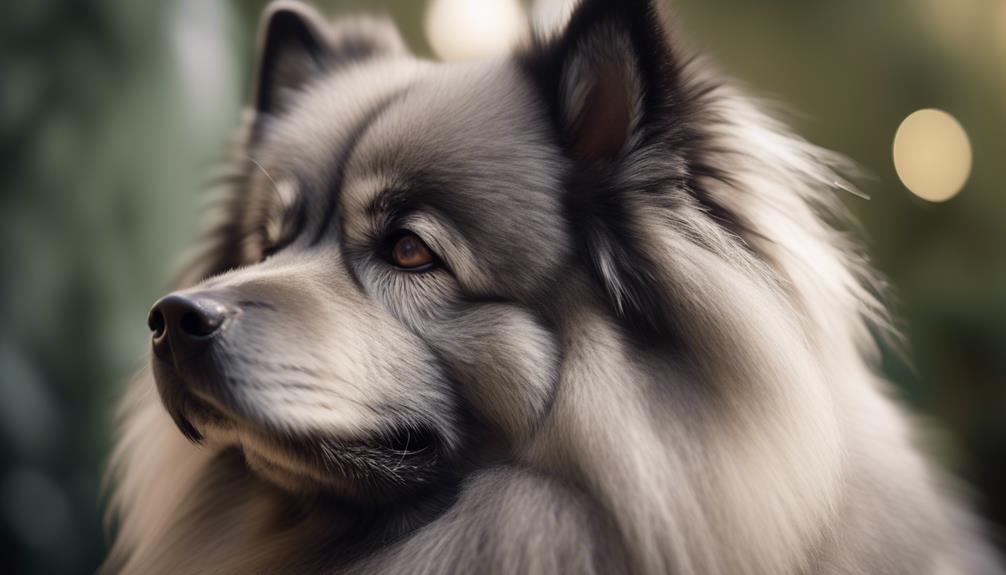
On average, Keeshonds live for 12 to 15 years, making them a long-lasting and cherished companion. With proper care and attention, you can expect to enjoy many years of love and loyalty from your Keeshond.
Regular veterinary check-ups, a balanced diet, and regular exercise are key to ensuring your Keeshond's health and well-being. It's important to note that individual lifespan can vary based on genetics, overall health, and lifestyle factors.
By providing a loving and nurturing environment, you can help maximize your Keeshond's lifespan and create lasting memories together.
Cherish the time you have with your Keeshond, as they bring joy, companionship, and a lifetime of unconditional love.
Adaptability to Apartment Living

Consider the adaptability of the Keeshond breed to apartment living, taking into account factors such as size, energy level, and manners.
Here are four key considerations regarding the Keeshond's adaptability to apartment living:
- Size: While the Keeshond is a medium-sized breed, their weight range of 35-45 pounds makes them suitable for apartment living, as they don't take up too much space.
- Energy Level: Keeshonds are known for their moderate energy levels. They aren't overly hyper or high-energy, which makes them well-suited for apartment living where they can be content with regular exercise and mental stimulation.
- Manners: Keeshonds have a reputation for being well-mannered and displaying good behavior. They're generally quiet and not prone to excessive barking, making them ideal for apartment living where consideration of neighbors is important.
- Adaptability: Keeshonds can adjust well to various living spaces, including apartments. They're known for their friendly and affectionate nature, making them good companions for apartment dwellers.
Consider these factors when assessing the Keeshond's adaptability to apartment living, and ensure that their needs for exercise, mental stimulation, and socialization are met.
Exercise Needs and Energy Levels
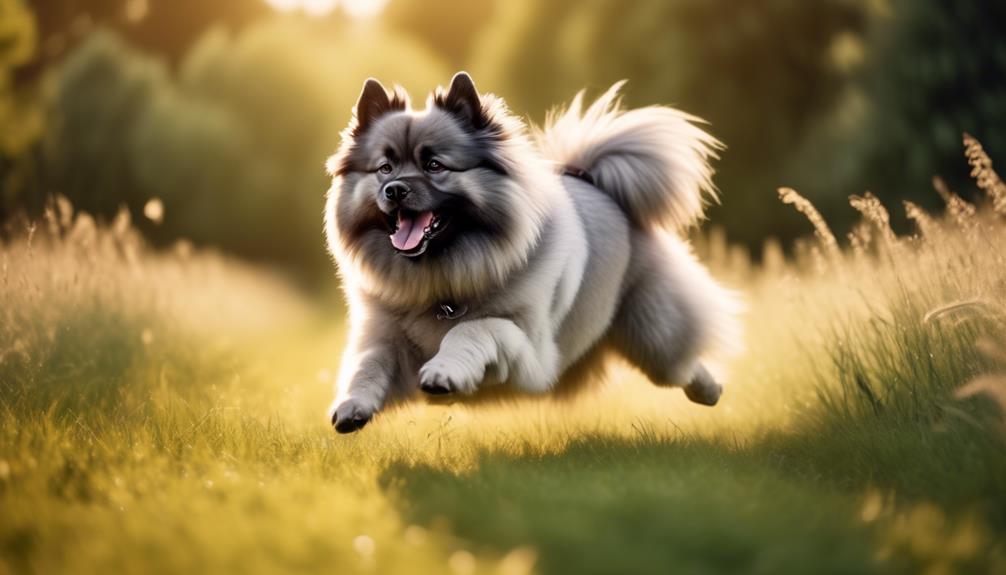
To ensure the overall well-being and happiness of your Keeshond, it's important to understand their exercise needs and energy levels. Keeshonds are a medium-sized breed that require a moderate amount of exercise. They've a good amount of energy and enjoy various activities such as walks, runs, and playtime in a securely fenced yard.
Daily exercise is important to prevent boredom and promote their mental and physical health. Keeshonds are known for being intelligent and enjoy interactive games and training sessions. They also thrive on social interaction, so it's beneficial to engage them in activities that involve other dogs or people.
Keep in mind that excessive exercise can be harmful, especially for young puppies, so it's important to provide a balanced exercise routine tailored to their age and individual needs.
Temperament and Care

Keeshonds are known for their friendly and affectionate temperament, making them a great choice for families and novice owners.
Here are some important things to know about their temperament and care:
- Affectionate with family: Keeshonds love to be around their family and are known for their affectionate nature.
- Good for novice owners: These dogs are generally easy to train and are a good fit for first-time dog owners.
- Tolerates being alone: Keeshonds can handle being left alone for moderate periods of time, but they prefer to be with their family.
- Tolerates cold and hot weather: These dogs have a thick double coat that helps them tolerate both cold and hot weather conditions.
With their friendly nature, ability to tolerate being alone, and adaptability to different weather conditions, Keeshonds make wonderful companions for families and individuals alike.
Tolerance to Weather Conditions
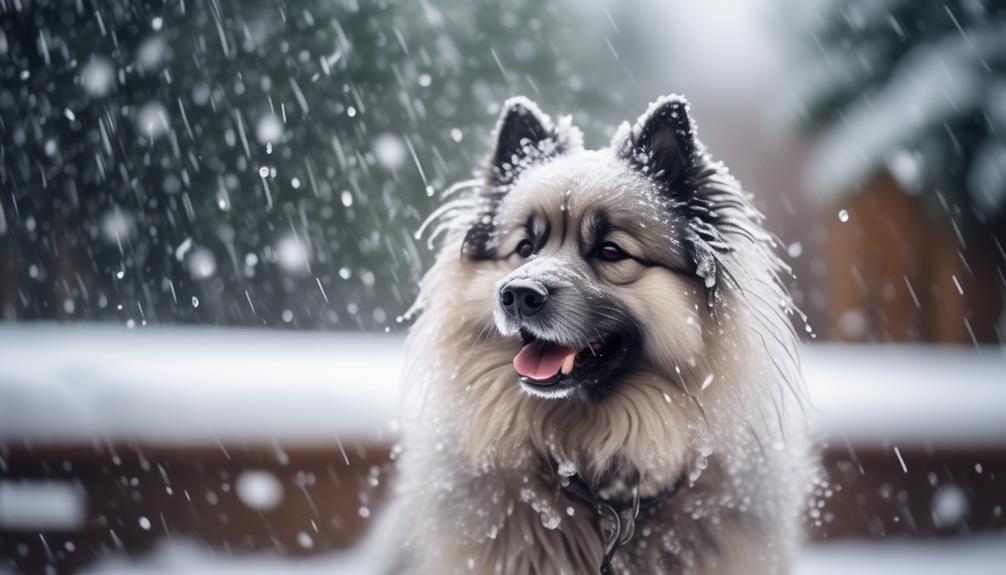
With their adaptable nature and ability to handle different weather conditions, Keeshonds are well-suited for various climates. They have a thick double coat that provides insulation and protection from the elements, allowing them to tolerate both cold and hot weather. Keeshonds should be kept indoors or near fans on hot days to prevent overheating. They can also withstand colder temperatures, thanks to their dense fur. To showcase their tolerance to weather conditions, here's a table highlighting the temperature range in which Keeshonds are most comfortable:
| Weather Condition | Temperature Range |
|---|---|
| Cold | 30°F – 50°F |
| Mild | 50°F – 70°F |
| Hot | 70°F – 85°F |
Whether it's snow or sunshine, Keeshonds are ready to embrace the weather and enjoy their time outdoors.
Socialization and Training

Socialization and training are essential for Keeshonds to develop into well-behaved and balanced dogs. Here are four important aspects to consider when socializing and training your Keeshond:
- Early socialization: Expose your Keeshond to different people, animals, and environments from an early age. This will help them become comfortable and well-adjusted to various situations.
- Positive reinforcement: Use positive reinforcement techniques, such as treats and praise, to reward good behavior. Keeshonds respond well to positive reinforcement and gentle training methods.
- Consistency: Be consistent with your training and set clear boundaries for your Keeshond. This will help them understand what's expected of them and promote good behavior.
- Ongoing training: Training should be an ongoing process throughout your Keeshond's life. Regular training sessions will help reinforce desired behaviors and prevent any unwanted habits from developing.
Health Conditions and Grooming
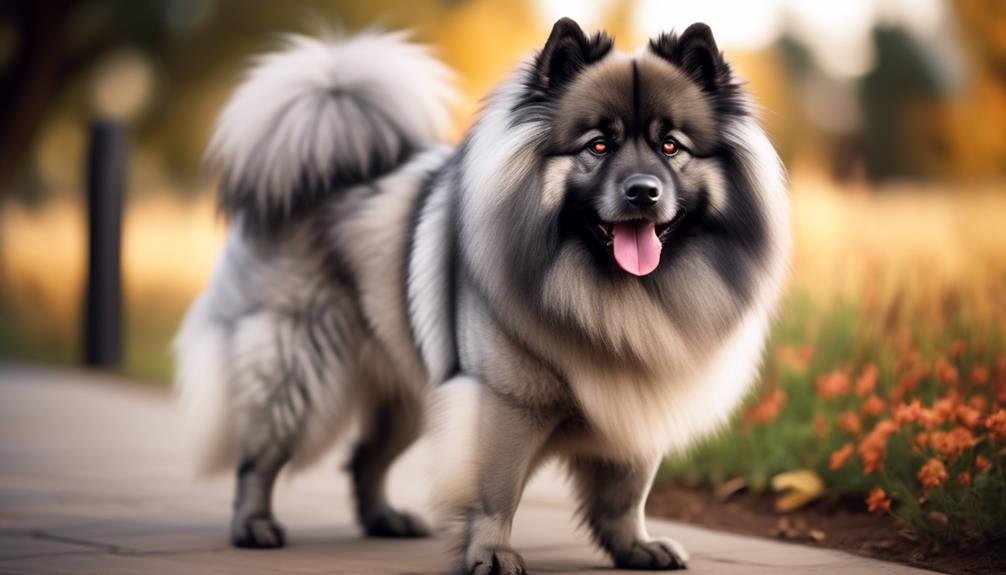
To ensure the health and well-being of your Keeshond, it is important to be aware of common health conditions and implement a regular grooming routine. Keeshonds are prone to several health conditions including Addisons Disease, Hip Dysplasia, Progressive Retinal Atrophy (PRA), Patellar Luxation, Diabetes Mellitus, Von Willebrands Disease, Hypothyroidism, Cataracts, Epilepsy, and Allergies. Regular grooming is essential for maintaining their thick double coat. They shed heavily twice a year and require more frequent brushing during this time. Additionally, their nails should be trimmed regularly, and their ears checked and cleaned to prevent infections. By taking proactive measures to address their health conditions and maintaining a consistent grooming routine, you can help ensure that your Keeshond remains happy and healthy.
| Common Health Conditions | Grooming Routine |
|---|---|
| Addisons Disease | Regular brushing |
| Hip Dysplasia | Shedding management |
| Progressive Retinal Atrophy (PRA) | Nail trimming |
| Patellar Luxation | Ear cleaning |
| Diabetes Mellitus | Skin and coat care |
| Von Willebrands Disease | |
| Hypothyroidism | |
| Cataracts | |
| Epilepsy | |
| Allergies |
Adoption and Breeding Considerations
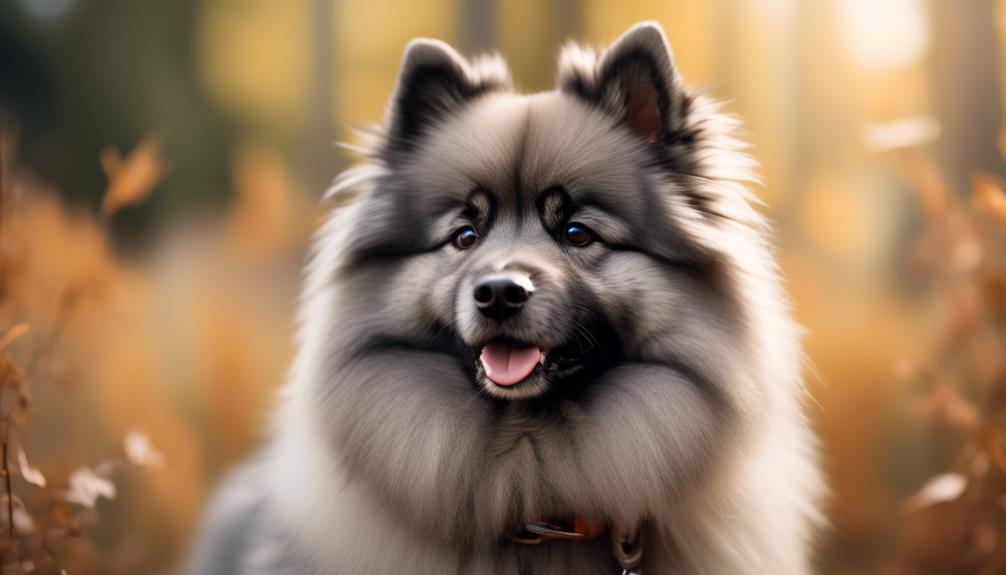
When considering the adoption or breeding of a Keeshond, it's important to be aware of certain factors that can contribute to the overall well-being and happiness of the dog. Here are four considerations to keep in mind:
- Prioritize adoption from a rescue group: Consider adopting a Keeshond from a rescue group before going to a breeder. Rescue groups prioritize finding loving homes for dogs in need.
- Choose a reputable breeder: If you decide to go to a breeder, ensure they prioritize breeding healthy and well-socialized puppies. Reputable breeders screen their breeding stock for health problems and provide lifetime support to puppy owners.
- Beware of backyard breeders: Backyard breeders prioritize profit over the health and well-being of the dogs. It's important to avoid supporting such breeders.
- Maintain regular dental and ear care: Brush your Keeshond's teeth regularly to prevent tartar buildup and check their ears weekly for redness or bad odor. This helps prevent dental and ear infections.
Regular Dental and Ear Care
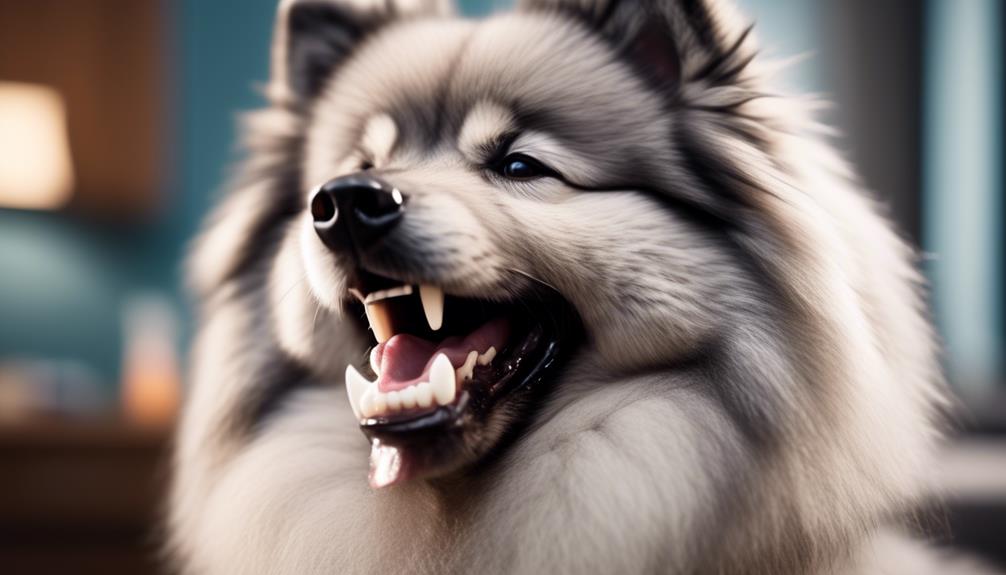
Regular dental and ear care is essential for maintaining the overall health and well-being of your Keeshond. To keep your dog's teeth clean and healthy, brush them regularly to remove tartar buildup. Daily brushing is even better to prevent gum disease and bad breath.
Additionally, check your Keeshond's ears weekly for redness or bad odor, as ear infections can be common in this breed. To clean the ears, simply wipe the outer ear with a cotton ball dampened with ear cleaner.
It's also important to conduct a weekly examination for sores, rashes, or signs of infection on the skin, eyes, nose, mouth, and feet.
Frequently Asked Questions
Are Keeshonds Good With Cats and Other Small Pets?
Yes, Keeshonds are generally good with cats and other small pets. They are known to be friendly and get along well with children and other animals. Proper socialization and training from an early age is important.
How Often Should I Bathe My Keeshond?
You should bathe your Keeshond every 6-8 weeks, or as needed if they get dirty. Regular brushing and grooming will help keep their coat clean and healthy.
Do Keeshonds Have a Tendency to Bark Excessively?
Yes, Keeshonds have a tendency to bark excessively. They are known for being vocal and using their bark to communicate. Proper training and socialization can help manage their barking behavior.
Can Keeshonds Be Left Alone for Long Periods of Time?
Yes, Keeshonds can be left alone for long periods of time. However, it's important to note that like any dog, they thrive on companionship and may experience separation anxiety if left alone for extended periods.
Are Keeshonds Prone to Separation Anxiety?
Yes, Keeshonds can be prone to separation anxiety. They are affectionate dogs that thrive on human companionship. Leaving them alone for long periods of time can cause stress and anxiety.
What are the Similarities and Differences Between Keeshond and Kishu Ken Dog Breeds?
The Kishu Ken breed information characteristics and Keeshond have similar furry coats and fox-like faces. However, the Kishu Ken is a Japanese breed known for its strong prey drive and loyalty. The Keeshond, on the other hand, is a Dutch breed with a more friendly and outgoing nature.
Conclusion
Overall, the Keeshond is a wonderful dog breed that can fit well into various living situations.
Their friendly and affectionate nature makes them great companions for families, and they get along well with children and other pets.
With proper socialization and training, they can grow up to be well-behaved dogs.
Their exercise needs can be met with regular walks and playtime, and their grooming requirements are manageable.
Whether you choose to adopt or responsibly breed a Keeshond, they'll bring love and joy to your life.




